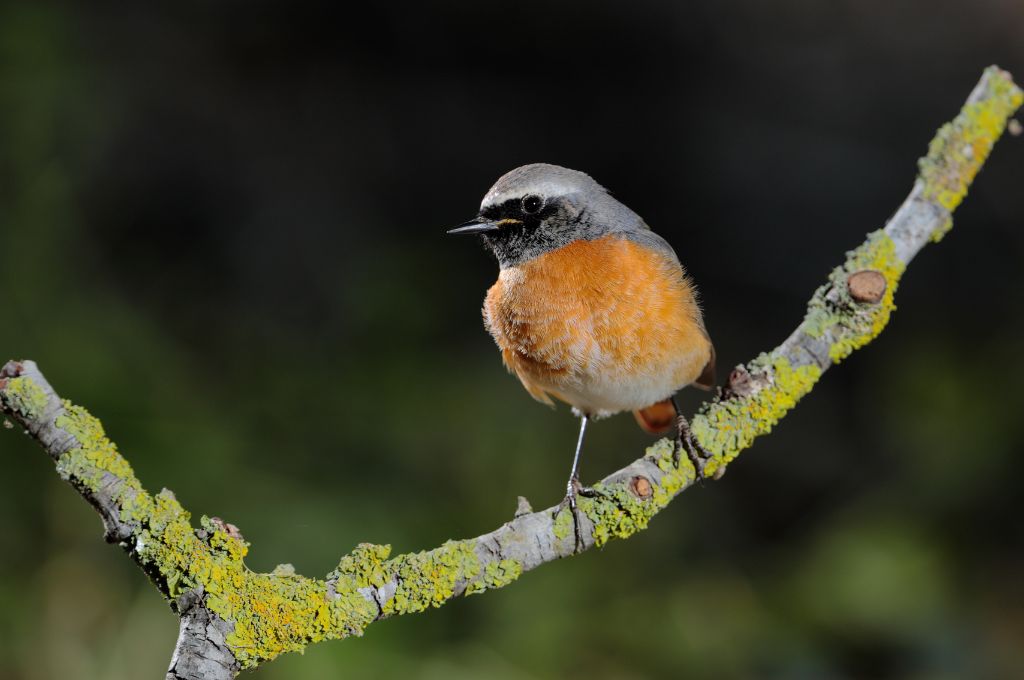Robins, those plump and delightful creatures adorning our gardens and parks, often catch our attention with their round, chubby bodies. But have you ever wondered why robins are fat? Beyond their aesthetic appeal, their corpulence serves a purpose deeply intertwined with their survival and evolutionary history.
The Evolutionary Puzzle of Robin Plumage
In the avian world, robins stand out for their plumpness and distinctive red breast, a feature that has intrigued by scientists and bird enthusiasts alike for centuries. But why do robins flaunt such vibrant plumage, and how does it connect to their weight?
Scientifically known as Turdus migratorius, Robins have evolved their plump bodies and red breasts as part of a complex survival strategy. The red breast serves as a signal of health and vitality during mating rituals, while their chubby physique is a testament to their adeptness at storing energy for essential tasks such as migration and breeding.
The Winter Weight Gain Phenomenon
As the seasons shift and winter approaches, you may notice robins appearing even plumper than usual. This phenomenon, known as winter weight gain, is a crucial adaptation that allows these birds to endure harsh weather conditions and food scarcity during the colder months.
During autumn, robins intensify their foraging efforts, consuming a variety of berries, fruits, and insects to build up fat reserves. This surplus energy is stored in their bodies as adipose tissue, providing insulation against the biting cold and serving as a readily available fuel source during periods of scarcity.
Adaptations for Migration Success
Migration is a grueling journey fraught with challenges, requiring birds to traverse vast distances and endure extreme weather conditions. For robins, being fat is not just a matter of aesthetics; it’s a survival strategy finely tuned through millennia of evolution.
Before embarking on their long migratory journeys, robins undergo a process known as hyperphagia, where they voraciously consume food to build up fat stores. This excess weight provides the necessary energy for sustained flight and serves as a buffer against unpredictable weather events and food shortages along the way.
The Role of Feeding Behavior in Robin’s Obesity
Obesity in robins is not merely a consequence of overindulgence but rather a strategic response to the demands of their environment. Their feeding behavior is finely tuned to maximize energy intake while minimizing expenditure, ensuring survival in diverse habitats and climates.
Robins exhibit opportunistic feeding behavior, capitalizing on seasonal fluctuations in food availability to stockpile resources for leaner times. By consuming diverse foods, including insects, earthworms, fruits, and seeds, they maintain a balanced diet rich in essential nutrients necessary for their health and vitality.
The Impact of Urbanization on Robin’s Obesity
Rapid urbanization has transformed landscapes worldwide in recent decades, presenting both opportunities and challenges for wildlife. For robins, adapting to urban environments has meant navigating a landscape altered by human activities, including changes in habitat structure, food availability, and predation pressure.
Urban areas often offer a bounty of food sources for robins, ranging from backyard bird feeders to ornamental fruit trees and manicured lawns teeming with insects. This abundance of resources can contribute to why robins are fat in urban settings, where they can afford to indulge in calorie-rich diets without the constraints imposed by natural habitats.
The Paradox of Plenty: Obesity vs. Survival
While obesity may carry negative connotations in human society, being fat is synonymous with survival and reproductive success for robins. Their plump bodies serve as a testament to their resilience in the face of adversity, allowing them to thrive in diverse ecosystems and weather the challenges posed by environmental change.
Despite the advantages of their corpulence, robins must strike a delicate balance between maintaining optimal body condition and avoiding the pitfalls of excessive weight gain. In a world where resources are finite and competition is fierce, efficient energy management is vital to their long-term survival and evolutionary success.
The Nutritional Requirements of Robins

Robins, like all living organisms, have specific nutritional requirements essential for their growth, development, and overall well-being. Their diet consists primarily of insects, earthworms, fruits, and berries, providing them with a balanced mix of proteins, carbohydrates, fats, vitamins, and minerals.
Insects and earthworms serve as rich sources of protein, crucial for muscle development, tissue repair, and egg production in breeding females. Fruits and berries, on the other hand, offer carbohydrates for energy, vitamins for immune function, and antioxidants for cellular protection against oxidative stress.
The nutritional composition of their diet varies seasonally, reflecting shifts in food availability and metabolic demands. During breeding, robins prioritize high-protein foods to support the energy-intensive tasks of nesting, incubation, and chick rearing. In contrast, winter months necessitate a diet rich in fats and carbohydrates to sustain them through reduced foraging activity and harsh weather conditions.
The Role of Genetics in Robin’s Fitness
While environmental factors play a momentous role in shaping robin fatness, genetics also contribute to individual body size and composition variations. Studies have identified specific genes associated with metabolism, appetite regulation, and fat storage that influence an individual’s propensity for obesity.
Genetic predispositions interact with environmental cues, such as food availability and predation pressure, to determine an individual robin’s body condition and fat reserves. Variations in these genes can confer advantages or disadvantages depending on the prevailing conditions, ultimately influencing an individual’s survival and reproductive success.
Furthermore, genetic diversity within robin populations is essential for adapting to changing environments and maintaining resilience in the face of environmental stressors. Conservation efforts to preserve genetic diversity are crucial for ensuring the long-term viability of robin populations in the wild.
The Impact of Climate Change on Robin Fatness
Climate change poses significant challenges for wildlife worldwide, altering habitats, disrupting food webs, and shifting seasonal patterns. For robins, climate change manifests in various ways, affecting their breeding success, migration patterns, and food availability, all of which have implications for their fatness and survival.
Rising temperatures can lead to mismatches in the timing of food availability and peak energy demands, potentially affecting robin populations’ ability to build fat reserves before migration or breeding. Extreme weather events, such as heatwaves or droughts, can also reduce insect abundance or fruit availability, forcing robins to adapt their foraging strategies or rely on alternative food sources.
Additionally, changes in habitat structure and vegetation composition can impact the availability of nesting sites and foraging areas for robins—urbanization and deforestation fragment habitats, reducing connectivity between suitable patches and increasing resource competition among bird populations.
The Human Connection: Robins in Folklore and Culture
Robins holds a special place in human culture, folklore, and mythology, symbolizing themes such as rebirth, renewal, and the arrival of spring. In many cultures, robins are associated with good luck, protection, and divine messenger roles, often depicted as cheerful and benevolent creatures.
In European folklore, robins are said to have acquired red breasts from carrying fire to humans during the cold winter, symbolizing their altruism and compassion. In Native American traditions, robins are revered as symbols of joy, creativity, and new beginnings, often depicted in art and storytelling.
In modern times, robins continue to captivate our imaginations through literature, art, and popular media, appearing as beloved characters in children’s books, holiday decorations, and garden ornaments. Their cheerful songs and vibrant plumage brighten our days and remind us of the beauty and resilience of the natural world.
Conclusion: Decoding the Mysteries of Robin Fatness
In conclusion, why robins are fat is not merely a matter of curiosity but a window into the intricate interplay between biology, ecology, and behavior. From their plump bodies to their vibrant plumage, every aspect of a robin’s appearance and lifestyle is a testament to their remarkable adaptability and resilience in adversity.
As we marvel at these delightful creatures gracing our gardens and parks, we remember that behind their chubby cheeks lies a story of survival, evolution, and the timeless struggle for existence. So, the next time you encounter a robin, take a moment to appreciate the intricate beauty of nature’s design and the extraordinary adaptations that make these birds truly fat and fabulous.




